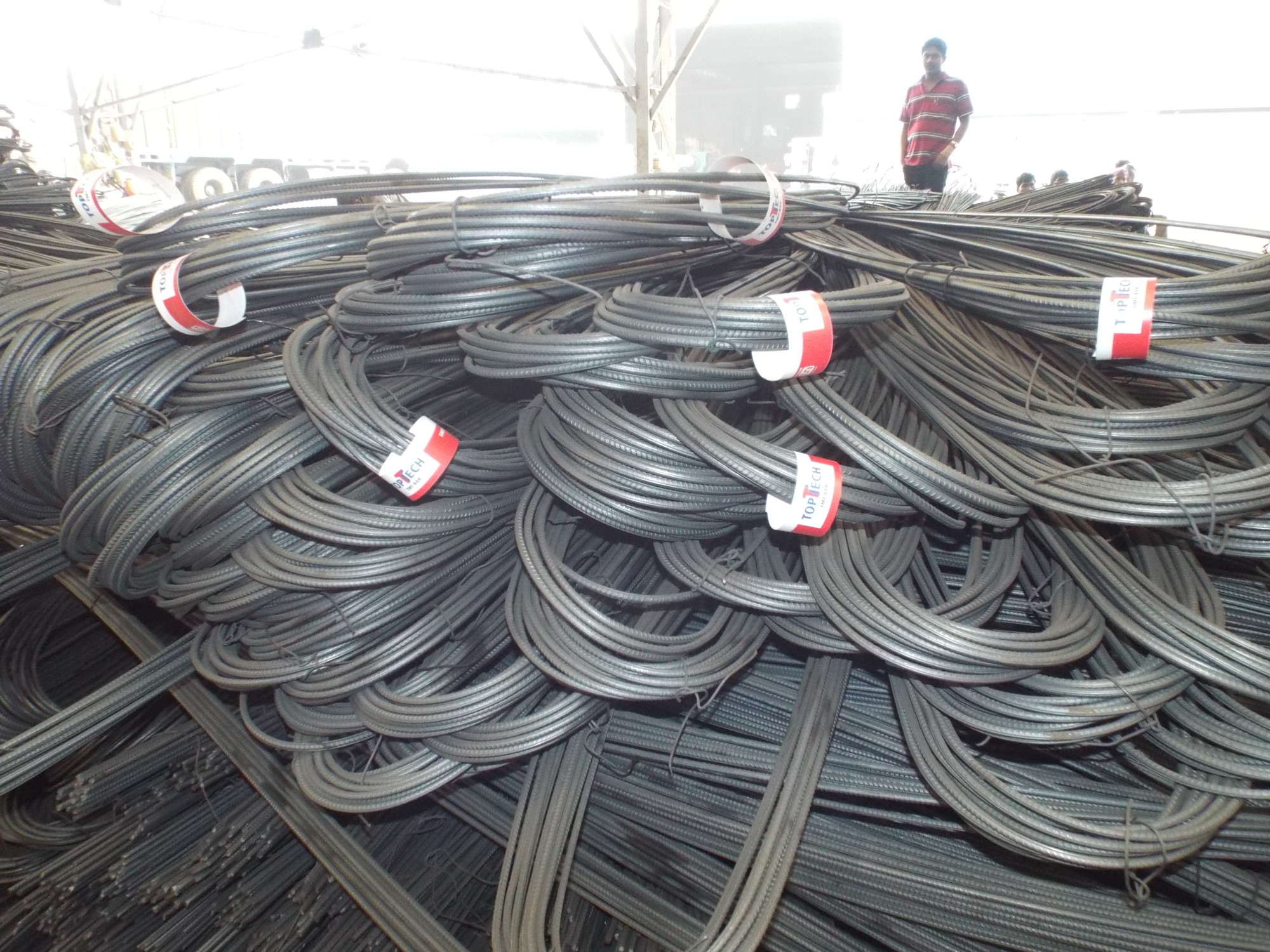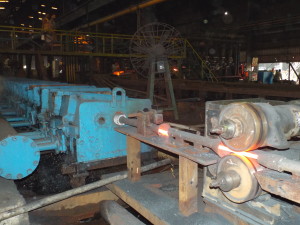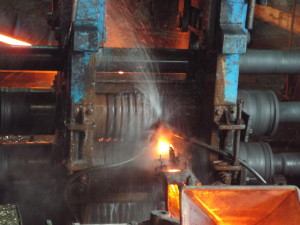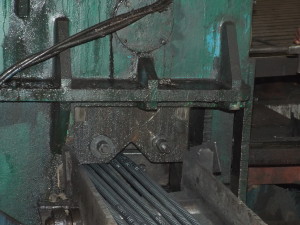The term Thermo-mechanical Treatment has derived from metallurgical process that incorporates work-hardening and heat treatment in a single process. The principle advantage of this process is that the steel rebar do not require cold twisting, which makes them superiorly resistant to corrosion.
TMT bars are one of the most important elements of a RCC structure, as the concrete, without proper reinforcement through a good quality TMT bar, cannot hold the tensile load.

A good brand of TMT bar fortifies the following features in itself:
- Excellent tensile strength
- Great bond with the concrete
- Good thermal stability
- Longevity in concrete environment
Cross section of a good quality TMT bars shows three distinct layers:
- Tempered Martensite/ outer layer.
- Annular zone of bainite middle layer.
- Ferrite, pearlite core / inner layer
This is the perfect micro structure of a good quality construction TMT bar.
Manufacturing of good quality TMT bars majorly depends upon three factors:
- Raw material: Superior quality billets, made from first class iron ore
- Manufacturing Component: Fully automated modern block mills, fitted with tungsten carbide rollers
- Manufacturing Process: PLC controlled online thermo-mechanical process
Billets are re-heated at a temperature in the re-heating furnace. Heated Billets are rolled into specific sections of finished material under automated rolling process through block mill. Manufacturing of thermo-mechanically treated steel rebar goes through three successive stages, which involves plastic deformation of steel through an austenitic stage, quenching and further self-tempering in automated cooling bed.

“Tempcore Process “ For Quenching: The quenching process increases the tensile strength and high ductility and weldability of the steel TMT bars. The process quenches the surface layer of the hot rolled bar that pressurizes and deforms the micro crystal structure of the intermediate layers and guarantees standardized mechanical properties. It concurrently begins to temper the quenched layers using heat from the bar’s core. This helps in forming the accurate crystal structure, and the core stays hot and austentic at the same time. Afterwards it is rolled to trim down the billets to the final shape and size of TMT bars.

Self-tempering: Here the bar leaves the quench box with a temperature gradient through its cross section. Consequently, heat flows from the bar’s centre to its surface and the core remains hotter than the outer surface. This process toughens the steel by converting the brittle martensite into tempered martensite.

Atmospheric cooling: This particular process takes place at the cooling bed, where it automatically tempers the authentic core and transforms it into a ductile core of the ferrite. This results in a strong, tough and tempered martensite surface layer of the steel TMT bar. This ensures the perfect blend of ferrite and pearlite core a unique combination of strength and ductility.
After the thermo-mechanical treatment is processed, they are straightened and cut into different lengths and sizes through cold shear.
The steel rebar is then sent for quality inspection, in terms of physical properties and chemical composition. The certified finished products are then properly stacked and stored and later dispatched as per customer and dealers’ requirements.







